Federal guidance suggests inclusion of climate and equity are substantial changes
A series of meetings regarding the replacement of the Interstate Bridge the past few weeks have highlighted some challenges ahead for the project. They include increased citizen focus on fixing traffic congestion, the demand by two Oregon Congressmen that light rail be included in the project, and the possibility that the inclusion of climate change and equity in the Purpose and Need Statement would trigger a new Environment Impact Statement (EIS).
The Interstate Bridge Replacement Program (IBRP) team submitted information to its “federal partners” — the Federal Highway Administration (FHWA) and the Federal Transit Administration (FTA) — regarding their proposed revised Purpose and Need Statement. This document defines the problem, and all possible solutions are measured against it in determining which options can be considered for the replacement project.
In the revised Purpose and Need Statement, the IBRP team added language about climate change and equity that was not contained in the earlier Columbia River Crossing (CRC) Purpose and Need. IBR Administrator Greg Johnson reported the FHWA and FTA response indicated that these were substantive changes which would likely trigger the need for a much longer process, in order to comply with getting a supplemental EIS or a new EIS.
Greg Johnson provides insights on IBRP process and feedback from federal partners
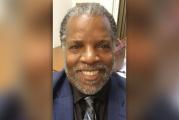
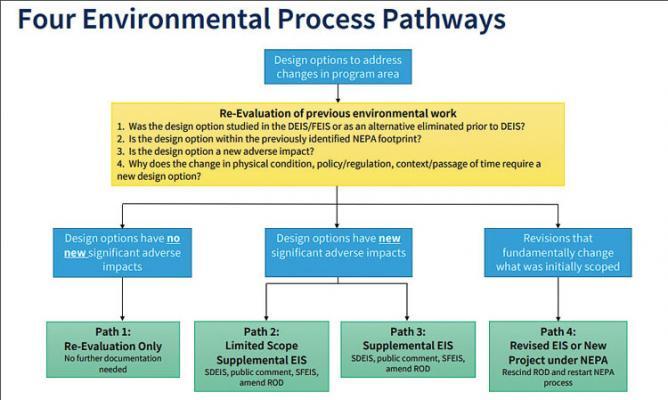
The FHWA and FTA stated “At a minimum, any changes to the existing FEIS would render it a “revised FEIS” and necessitate a new ROD (Record of Decision) to effectuate it.”
A new EIS would re-open the range of alternatives the IBRP team reported. This would be welcome news to those citizens hoping to get a tunnel, a third bridge crossing, or the common sense alternative considered. A new EIS would add time and additional costs to the current process.
The FHWA and FHA reported: “changes to the Purpose and Need section are particularly sensitive since it is so critical to determining the range of alternatives that must be considered. If such changes are so substantial that they render the existing range of alternatives inadequate, then a revised FEIS is no longer appropriate and a new EIS and NEPA process must be initiated to develop a new range of alternatives for the proposed action.”
They concluded: “Based on our review, we believe the proposed modifications to the FEIS are potentially substantial enough to require a new EIS and NEPA process, although additional information on precisely how the proposed modifications would affect the existing range of alternatives is needed before we could confirm this.”
One option for the IBRP team could be to abandon the changes to the Purpose and Need, and move forward with the previous document. They could modify the changes to implement their climate and equity goals in different ways, without having them formally stated in the Purpose and Need document.
Another option would be to start a fresh process, not tied to the old documents and alternatives, rather than attempting to thread the needle of seeking federal approval for a modified Purpose and Need tied to the old alternatives.
That is not the direction the ESG nor the bi-state committee of legislators has given. Johnson hopes to have a meeting of the 16-member group soon, but nothing has been scheduled due to the fact that the Oregon legislature remains in session.
Johnson emphasized that it will be the federal partners that determine which of four paths the current effort takes.
Program area demographics
The ESG was provided a briefing on a variety of demographics in the program area and changes from 2010 to the present. People of color currently represent 25 percent of the program area, slightly less than the 28 percent for the Portland metro area as a whole. People with disabilities represent 20 percent in the program area versus 12 percent in the region.
The program area has 32 percent of people listed as “low income” (200 percent federal poverty level) versus 25 percent in the region. And 15 percent of households have no vehicle in the program area versus 9 percent in the region.
“In the program area, we have a pretty high concentration of households without a vehicle,” briefed the IBRP staff. “You can see in downtown Vancouver, there’s a pretty high concentration of well over a third of households that do not have a vehicle. Overall 15 percent of households do not have a vehicle; in the region as a whole that’s 9 percent. So you do have a lot of carless households.”
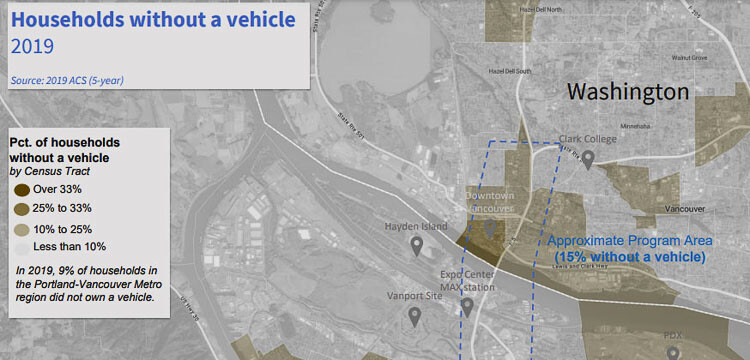
Twenty percent are older adults compared to 14 percent in the region. Whereas younger people comprised 21 percent in the program area versus 29 percent in the region.
Graphics showed locations of these populations inside and outside the project area.
Of interest to Southwest Washington residents was a graphic showing the highest percentage of low income households and people without vehicles as being located right along the Columbia River on either side of the Interstate Bridge. While there is a great deal of development occurring along the new Vancouver waterfront, there don’t appear to be that many residences in the area at this time.
The graphic paints a picture to indicate there are a lot of poor people without transportation options living in the south end of downtown Vancouver. If they are transient and homeless, then their transportation needs would be very different from permanent residents’ needs.
WSDOT Secretary Roger Millar mentioned that the data being viewed was from census tracts and percentages. “Keeping all the census tracts the same and looking at percentages is kind of like looking at voting patterns and having Petroleum County Montana, population 400, given the same weight as King County, Washington or Multnomah County, Oregon,” he said.
Reevaluating project needs
Chris Regan briefed the ESG about the IBRP team spending five months in a reevaluation process to identify what the needs are regarding the project. They found that climate and equity were important, but that the other six needs (previously identified in the Purpose and Need), remained.
“Reopening the work would extend the program schedule,” he said. “It would delay implementation of a solution to address the transportation problems in the IBR corridor, and would add significant expense to complete work previously completed, with a strong likelihood that similar solutions would be identified.”
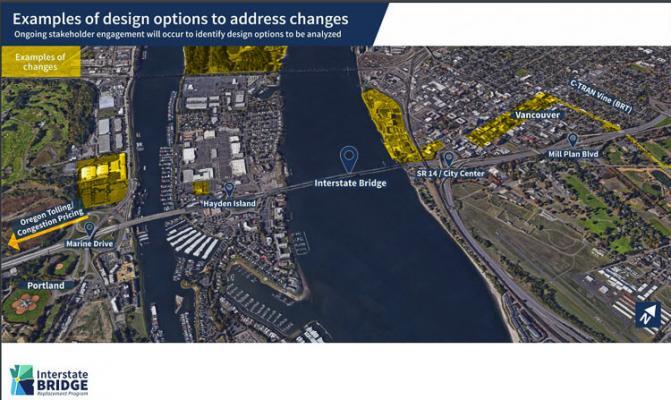
Johnson highlighted to the ESG that there are four pathways. Option one would have no new significant impacts. Options two and three are identifying new significant impacts, requiring a Supplemental Impact Statement (limited or full SEIS), and amending the Record of Decision (ROD). The fourth path are revisions that fundamentally change what was scoped in the original Columbia River Crossing (CRC). This would require a Revised EIS or a new project under NEPA. They would have to rescind the ROD and begin a new NEPA process.
Johnson and his team hope to avoid path 4, as it would result in both a significant delay and increased costs. The inclusion of climate and equity as changes to the Purpose and Need triggers at a minimum path 2 or 3, and possibly path 4. The IBRP team is committed to embedding equity and climate in actionable and measurable ways.
The ultimate decision on which path the project will have to follow, will be made by the federal government, based upon the information provided by the IBRP team.
The team pointed out that new construction on the Vancouver waterfront and the creation of C-TRAN’s Vine are part of what has changed since the CRC. There are also changes on Hayden Island, the Marine Drive area and the Expo Center to be accounted for. The Port of Portland has significantly changed its plans for west Hayden Island. This is in addition to the changed demographic data of the people in the project area.
It was noted that the Harbor Bridge connecting the freeway from Hayden Island to the mainland, was likely going to receive a seismic upgrade in the CRC. The IBRP team is evaluating what a replacement would look like.
Administrator Johnson highlighted the Hayden Island listening session a few days prior to the ESG meeting. He reported additional listening sessions will be held with other stakeholder groups as the process moves forward.
Not mentioned, was a survey at the Hayden Island listening session indicating 70 percent of attendees rated reducing traffic congestion as the biggest problem needing to be addressed.
“We’re also continuing work with our regional partners to identify other design options that they think are relevant to this program, that are different than what the last planning effort had on the table,” Johnson said. His team will be collecting data throughout this whole time period.
“The data is going to inform our modeling and analysis is going to be critical,” he said. That will include working with both Metro and RTC, as well as TriMet and C-TRAN.
Johnson highlighted that they have heard from the ESG a desire to use past work, but to not be limited by that work if changes are necessary.
Numerous ESG members shared their thoughts. Metro President Lynn Peterson praised Johnson’s commitment to being data driven.
“We’re committed to a really strong transparent reevaluation of all those items that have changed in our region since that last project,” said Vancouver Mayor Anne McEnerny-Ogle. She is “especially looking for that relevant data that we need for the high capacity transit, not just the mode, but the alignment and the station location.”
Many citizens will be interested in that data as well, given that light rail was a major issue in the failed CRC effort.
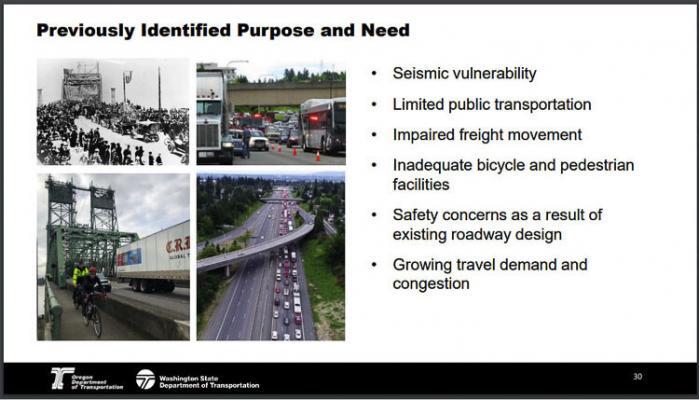
Mayor McEnerny-Ogle brought up the comments by Congressman Peter DeFazio. She said it might indicate he didn’t understand the status of the project. She called for more regular communication with government leaders and for everyone on the ESG to be speaking with one voice.
Portland City Councilor Jo Ann Hardesty called for meetings with the Congressional delegations. “It was a little embarrassing to hear our longest serving representative talk in a way that was clear that he was not engaged in what was happening at the moment.”
C-TRAN CEO Shawn Donaghy shared that the feedback from the federal government provides an opportunity to slow down and make a course correction. He wants to make sure “we have exactly the plan that we want to put in place, in order to move this project forward in the way that we would like to see that project move.”
Most of the ESG members voiced appreciation and support for continuing the emphasis on both equity and climate.
Ed Washington, co-chair of the Community Advisory Group spoke about neighborhoods being devastated by highway projects in Birmingham, where he grew up. He echoed concerns voiced by Hardesty that the project needs to be restorative in nature due to the harm caused by the original creation of I-5 through Portland’s Albina neighborhood.
Hughes emphasized trying to keep it simple. “All the feedback we have here is kind of what we’ve had before. We have to know what those objectives are. What do we want and what do the citizens want?”
Citizen Robert Liberty, former Metro Counselor weighed in during public comment. He believed the current effort is on “path five” which will result in another failed project.
“Path five is project collapse, a repetition of what happened with the prior stage of this project, the Columbia River Crossing,’’ Liberty said. “The very same fundamental differences in opinion over tolling, demand management, and light rail, that contributed to the collapse of the CRC persists today or perhaps are even sharper now.“
Liberty referenced a detailed critique of the project by David Bragdon, former president of the Metro Council at the time of the CRC.
“There are many cheaper, greener, more equitable and more cost effective projects that have broader support,” he said. “Any of them would take you off path five project collapse. To avoid path five, the ESG needs to assert control of the conversation by directing project staff to devote to meetings to discussing the actual project content and outcomes.”




